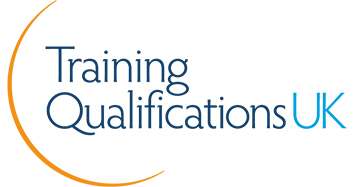22nd October 25
Navigating digital marketing can feel complex, and search is often the area people want clarity on first. So, what does SEO mean? In short, Search Engine Optimisation (SEO) is the process of making your website easier to find and more useful for people searching online. By improving content, strengthening technical elements, and building credibility across the web, you help the right audience discover your pages at the right moment.
If you’re asking “SEO what does it mean for my career?”, learndirect’s online CIM Certificate in Professional & Digital Marketing Level 4 (RQF) includes a focused module on SEO alongside broader marketing essentials. It equips you with practical skills you can apply straight away. Throughout this guide, we’ll explain what does SEO marketing mean, how search engines work, and the building blocks of a reliable strategy. We’ll also show how the CIM Level 4 course brings these elements together so you can plan responsibly, use social media with intent, and put SEO and paid search into practice.
Understanding search engine optimisation
When people ask “what does SEO mean in simple terms?”, they want a clear explanation that cuts through the jargon. Put simply, SEO is about aligning your pages with what people type into search engines like Google and ensuring your site is technically sound so those pages can be found, understood, and ranked. It spans three areas: technical performance (speed, mobile readiness, structured data), on-page elements (titles, meta descriptions, headings, image alt text, readable copy), and overall content quality.
Good SEO brings tangible benefits. It increases organic traffic - visitors who find you naturally - often from specific questions and needs. It builds credibility as your pages appear consistently in search results, and it improves user experience with faster load times and straightforward navigation. Unlike short bursts of advertising, SEO compounds over time. Improvements made today can keep delivering value for months or years when content is maintained and refreshed. If you’re still wondering, “SEO what does it mean for my business?”, think of it as a long-term engine for visibility and trust.

Key components of SEO
To answer “what does SEO mean” in day-to-day terms, it helps to break it down into three pillars: on-page optimisation, off-page authority building, and technical foundations. Together, these make it easier for search engines to interpret your pages and for people to trust and use them.
On-page SEO
Begin with intent-led keyword research to find the terms your audience uses, then weave those phrases naturally into titles, headings, meta descriptions, image alt text, and body copy. Provide clear answers near the top of the page, use logical subheadings, and keep paragraphs short. Internal links should connect related topics and guide visitors to deeper information. If you’re looking for what is an example of SEO, think of a well-structured guide that answers a common question thoroughly, with clear headings, relevant images, and helpful links.
Off-page authority
Search engines look beyond your site for signals of credibility. Backlinks from respected sources act like endorsements. Publishing insightful guides, original research, and practical tools can earn references naturally. Consistent brand mentions, accurate local citations, and a strong reputation all add to your authority. Ethical outreach focused on value and relationships beats shortcuts every time.
Technical SEO
Technical health ensures search engines can find, crawl, and index your content efficiently. If you’re asking “what is technical SEO and how does it work?”, it covers page speed (compressed images, lean code, caching), responsive design, clean site architecture, XML sitemaps, robots.txt, canonical tags, and structured data. It also includes HTTPS security, fixing broken links and redirect chains, and running regular audits to catch issues early. This is the backbone that supports everything else.
Organic vs paid search
When exploring “what does SEO marketing mean”, it’s helpful to distinguish organic and paid search. Organic results are earned, the pages appear because they’re relevant and authoritative for a query. This visibility comes from strong technical foundations, quality content, and trustworthy signals like backlinks. Paid search places adverts through bidding platforms; you pay when people click, which can deliver quick visibility and targeted reach.
Organic search delivers sustainable value. Well optimised content can attract visitors month after month without ongoing costs per click, and people often trust non-advert listings more. Paid search complements this by providing immediate traffic and useful data - click-through rates, message testing, and converting queries - that can inform and strengthen your SEO plan. Used together, SEO builds long-term visibility while paid campaigns capture timely opportunities and validate ideas. If you’re still considering “SEO what does it mean for results?”, it’s the route to dependable, compounding traffic.
How search engines work
To fully answer “what does SEO mean in simple terms”, it helps to understand how search engines operate: crawling, indexing, and ranking. Crawlers discover pages by following links and sitemaps. A clear site structure and sensible internal linking make discovery easier. Indexing stores and organises information about your pages. Descriptive titles, headings, alt text, and structured data help search engines understand the content and context.
Ranking is where algorithms decide which indexed pages best answer a query. They weigh many signals - content relevance, on-page optimisation, site speed, mobile friendliness, security, and external endorsements through links. They also consider search intent: is the person looking for a definition, a how to, or a local service? Pages that provide accurate, comprehensive answers in a user-friendly format tend to perform better. Regular updates and content freshness help you stay visible as topics evolve.
Creating an effective SEO strategy
A sound strategy connects audience needs with your site’s strengths and commercial goals. Start with research: identify the phrases people use, group related terms into themes, and map each theme to a page type based on intent - guides for informational queries, service or product pages for commercial queries, and clear navigational pages for brand searches. Choose priorities that balance volume, relevance, and competitiveness, then plan content clusters to build topical authority.
With priorities set, optimise methodically. Write descriptive titles that include your primary keyword naturally, then craft meta descriptions that encourage clicks. Provide a concise summary at the top, then expand with structured sections. Use semantically related terms to cover the topic thoroughly. Keep internal links purposeful with descriptive anchor text. Ensure images have meaningful alt text and URLs are clean. Technical steps like fast load times, mobile-first design, and well-formed HTML form the foundation.
Measurement turns activity into improvement. Define clear objectives like growth in organic sessions, improved rankings for target terms, or increased enquiries from search. You should also monitor click-through rate, time on page, and bounce rate to gauge intent match. Use performance reports to spot emerging queries for new or refreshed content. You can also run routine audits for index coverage, Core Web Vitals, and internal link health, then feed insights back into your plan.
Why SEO matters for business growth
Understanding what does SEO mean is ultimately about outcomes. Effective SEO helps the right people find you precisely when they’re researching a solution you offer. By improving technical performance, relevance, and authority, you drive qualified visits and support conversions, whether that means an enquiry, a booking, or a sale.
Visibility and trust are the immediate wins. Clear titles, accurate meta descriptions, structured headings, and informative copy help search engines match your pages to relevant queries. A purposeful internal linking approach guides visitors to your most valuable content. Technical improvements such as site speed, tidy architecture, and mobile readiness, make navigation straightforward. Over time, as your domain strengthens and your content library grows, your reach expands across more queries. If you’re wondering “what is an example of SEO delivering value?”, consider a helpful guide that ranks for multiple related phrases and consistently brings in enquiries.

Build job-ready skills with the CIM Certificate in Professional & Digital Marketing Level 4 (RQF)
If you’re ready to move from understanding to action, learndirect’s online CIM Certificate in Professional & Digital Marketing Level 4 (RQF) offers a flexible route to practical skills. It blends essential marketing knowledge with hands-on digital techniques - including a dedicated module on SEO and paid search - so you can apply what you learn to real scenarios.
The certificate is designed to build confidence across planning, responsible practice, social media, and search. Each module connects to the next, giving you a full picture of modern marketing and where SEO fits.
Module 1: Marketing Impact
This module provides the context to use SEO strategically rather than in isolation.
- Understand the purpose and contribution of marketing to the organisation: Align SEO with revenue, retention, and brand outcomes.
- Recognise factors and trends in the marketing environment: See how economic shifts, technology changes, and competitor moves affect channel choices and search opportunities.
- Identify what influences buyer behaviour: Translate motivations and pain points into intent-led content that answers real questions.
- Develop an effective marketing plan: Set objectives, define segments, outline content themes, and integrate SEO across channels.
- Manage implementation and control: Execute, monitor, and adjust activity - including SEO tasks - so efforts stay on track.
Why it helps with SEO: By seeing the bigger picture, you’ll choose keywords that align with business value, craft content for specific needs, and measure performance against clear objectives.
Module 2: Responsible Marketing
Sustainable, ethical practice is essential for long-term success and brand trust. This module shows how to balance commercial outcomes with social responsibility, principles that directly influence content choices and outreach methods in SEO.
- Assess the marketing environment’s impact on ethical, responsible, and sustainable decisions.
- Understand marketing’s role in supporting ethical, social and sustainable agendas.
- Adapt the marketing mix to meet societal and commercial objectives.
Why it helps with SEO: Ethical outreach and transparent content build credibility, increasing the likelihood of earning high-quality links and mentions - key signals for better rankings.
Module 3: Social Media Marketing
Social platforms amplify content and reveal the language and topics your audience cares about - powerful inputs for keyword research and planning.
- Recognise the importance of social media for organisations.
- Understand different platform applications and user behaviours.
- Develop a social media plan that aligns with objectives and measures performance.
Why it helps with SEO: Social engagement uncovers emerging questions and phrasing, informing keyword choices. Sharing optimised content can spark visibility and natural links.
Module 4: Search Engine Optimisation
This dedicated module brings the SEO essentials into focus and adds paid search knowledge so you can prioritise, test, and scale what works.
- Understand the importance of search engine marketing for organisations.
- Recognise the success factors for SEO: keyword intent, on page optimisation, technical health, and authority building.
- Develop effective paid search campaigns to complement organic efforts.
Why it helps with SEO: Combining organic fundamentals with paid testing gives faster feedback. You can validate topics, refine headlines, and identify converting queries, then apply those learnings to content and on-page improvements.
What you will learn and how it translates into practice
By the end of the certificate, you will be able to:
- Define clear marketing objectives and connect SEO work to outcomes like enquiries or sales.
- Research and prioritise keywords based on intent, competitiveness, and relevance.
- Plan content clusters that build authority across related topics.
- Optimise titles, meta descriptions, headings, and copy for clarity and relevance.
- Improve technical performance - speed, mobile experience, internal linking, and structured data.
- Develop ethical outreach habits that support link earning and reputation building.
- Use social insights to refine topics and language, then repurpose content for greater reach.
- Run paid search tests to gather data quickly and inform SEO priorities.
- Measure what matters, report confidently, and iterate based on evidence.
If someone asks “What does SEO mean in simple terms?”, you’ll explain it clearly and show practical examples of what is an example of SEO on your site, how technical checks are done, and how improvements lead to measurable results.
Applying SEO: A practical walkthrough
If you’re ready to turn “SEO - what does it mean” into action, here’s a straightforward workflow:
- Clarify goals: Decide whether you’re aiming for enquiries, sales, or sign ups. Tie SEO activity to these outcomes.
- Identify topics: Use search data, analytics, and common questions to list key topics. Group related subtopics into clusters.
- Research keywords: For each topic, find informative and commercial terms. Note intent, volume, and difficulty.
- Map pages: Assign primary and secondary keywords to specific pages. Avoid duplication by giving each page a clear purpose.
- Create or refresh content: Lead with a concise answer, then expand into sections with subheadings. Add internal links and helpful references.
- Optimise on-page elements: Write clear titles, meta descriptions, and headings. Use descriptive image alt text and tidy URLs.
- Check technical health: Test speed and mobile usability, fix broken links, implement structured data, and verify indexing.
- Promote responsibly: Share content through relevant channels and communities. Build relationships for ethical outreach and natural links.
- Measure and iterate: Track rankings, clicks, and conversions. Review engagement metrics and update where you see momentum.
If you're wondering “what is technical SEO and how does it work” in practice, these checks cover the key steps. And if someone asks, “What is an example of SEO in action?”, this workflow provides a clear model.
Common SEO myths and what actually works
Conflicting advice can make SEO feel overwhelming. Here are myths to ignore and better approaches to take:
Myth: You need to publish daily to rank.
Reality: Quality and intent alignment matter more than volume. A well-planned calendar with thorough, helpful articles will outperform thin posts.
Myth: Keywords must be repeated constantly.
Reality: Use the primary term naturally and include related language. Overuse harms readability.
Myth: Links are all that count.
Reality: Links help, but they work best when content is genuinely useful and the site is technically sound.
Myth: SEO is a one-time fix.
Reality: Search behaviour and competition evolve. Regular reviews, updates, and technical maintenance are essential.
These points help explain “what does SEO marketing mean” in practical terms: build useful content, maintain technical health, and improve steadily.
How the CIM Level 4 Certificate supports your next step
The CIM Certificate in Professional & Digital Marketing Level 4 (RQF) offers a structured, flexible route to practical marketing skills. You’ll gain the confidence to plan and execute activity that makes a measurable difference, particularly in search. The combination of modules ensures you can:
- See the bigger picture: Understand how SEO fits into the wider plan and choose priorities that align with commercial goals.
- Act responsibly: Build trust through ethical practices, inclusive content, and transparent communication.
- Amplify your work: Use social media strategically to extend reach and gather insights that strengthen content and keyword choices.
- Deliver search results: Apply SEO fundamentals and use paid search testing to accelerate learning and improve performance.
Because learning is online and delivered in manageable steps, it’s possible to build skills alongside other commitments. If someone asks, “What does SEO mean?” you’ll be able to answer clearly and put that understanding to work.
From learning to doing: A realistic plan to get started
To make the most of your new skills, choose one area to apply them immediately. For example, create a focused content hub:
- Define the hub: One pillar page covering the main topic and several supporting articles answering specific questions.
- Research carefully: Use intent-led keywords for each page and avoid overlap so each page can rank for its own focus.
- Structure clearly: Link from the pillar to each supporting page and back again, with descriptive anchor text.
- Optimise thoroughly: Titles, meta descriptions, headings, alt text, and internal links should be consistent and helpful.
- Promote sensibly: Share the pillar page across relevant channels and communities; reference supporting articles where helpful.
- Measure and refine: Track which articles attract traffic, where people spend time, and which pages drive enquiries. Use insights to expand the hub.
This practical approach mirrors how organisations build topical authority and steady organic growth. If you need to show “what is an example of SEO that works?”, a well-structured content hub is a clear demonstration.
Your path forward
SEO means aligning helpful, trustworthy content with real search needs and ensuring your site is fast, clear, and easy to navigate. It’s a blend of technical know-how, audience understanding, and steady optimisation. If you still find yourself asking “What does SEO mean in simple terms?”, think: make pages useful, make your site stable, and make improvements regularly.
learndirect’s CIM Certificate in Professional & Digital Marketing Level 4 (RQF) gives you the framework to do exactly that. You’ll see where SEO fits in the wider plan, how to act responsibly, how to use social channels to amplify your work, and how to apply both organic and paid search techniques in a practical, measurable way. If you’re ready to stop wondering “SEO what does it mean?” and turn it into real world capability, this course provides the structure and support to get you there. Find out more by viewing the course on our website below!



















